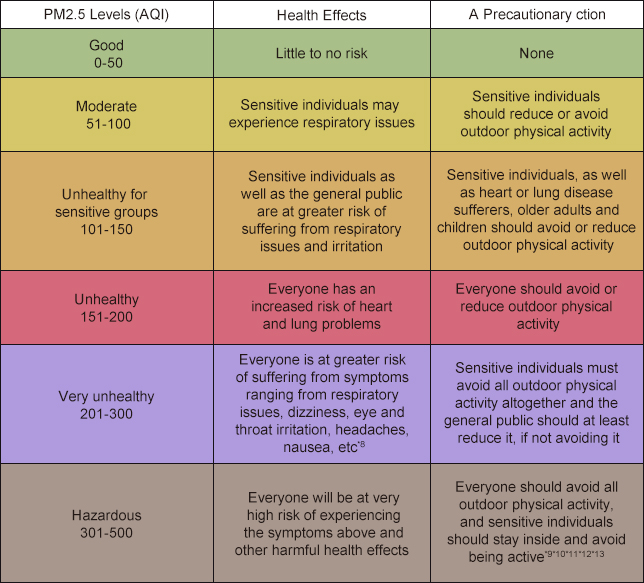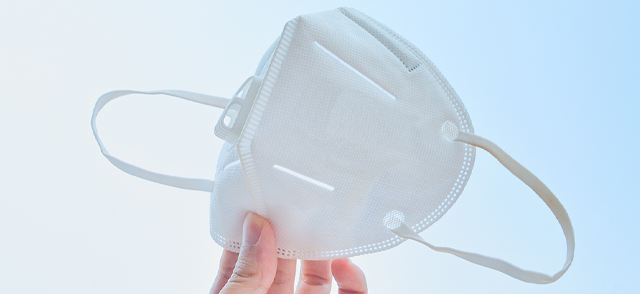How PM2.5 is damaging your health – and what to do about it
7 million people. That’s how many are estimated to die from air pollution around the world each year. The statistic includes the effects of PM2.5, a pollutant which is thought to be the greatest culprit.*1 The truth is that we’re all exposed to PM2.5 every day. But what is it exactly? And what can we do about it?
Table of Contents
○ How to read PM2.5 levels
○ PM2.5 masks
○ N95 medical respirators
○ Ventilation
○ Stop smoking
○ HEPA filter air purifiers
What is PM2.5?

PM2.5 is a type of pollutant which stands for fine particulate matter. It comes from a number of different emissions sources including transportation, power plants, wood burning fires, and fossil fuels. It’s a group of harmful particles that are incredibly small – just 2.5 microns wide – which is why it can be so dangerous. It means it’s easier for the pollutant particles to get into our bodies and harm our health.*2
Related posts
> What is PM2.5
Why you should be worrying about PM2.5 levels
The World Health Organisation says that air pollution is one of the greatest environmental risks to our health.*3 You only have to re-read the statistic at the beginning of this post to see the truth in that. PM2.5 contains several harmful substances, including benzoic acid, paraffin and a host of potential carcinogens.*4 The bottom line is that PM2.5’s health effects are serious. And because of that, it’s important to know how much of it is around you.
How to read PM2.5 levels
But how do you even tell how much PM2.5 there is in your environment? Besides a clear visual indicator like smog, you can go on sites like this one to see how your local area is doing. Many authorities, like the USA’s Environmental Protection Agency, use the Air Quality Index (AQI) as a framework of measuring and reporting air quality levels,*5 which is what you’ll see in the website linked above. For the AQI, regular readings are carried out on a number of pollutants, including PM2.5, and are then given a number from 0 to 500 to show how polluted the air is.*6 Below you’ll see a breakdown of the number ranges so you’ll know the different levels and health effects of PM2.5.*7

*3 https://www.who.int/news-room/fact-sheets/detail/ambient-(outdoor)-air-quality-and-health
*4 https://www.panasonic.com/uk/nanoe/all/how-nanoe-works/pm25.html
*5 https://www.cleanairresources.com/resources/how-do-i-read-the-air-quality-index
*6 https://www.cleanairresources.com/resources/how-do-i-read-the-air-quality-index
*7 https://www.iqair.com/newsroom/what-is-aqi
*8 https://www.healthpartners.com/blog/air-quality-index/
*9 https://www.iqair.com/newsroom/what-is-aqi
*10 https://www.epa.gov/pmcourse/patient-exposure-and-air-quality-index
*11 https://www.epa.gov/ozone-pollution-and-your-patients-health/patient-exposure-and-air-quality-index
*12 https://www.airnow.gov/sites/default/files/2018-04/aqi_brochure_02_14_0.pdf
*13 https://www.healthpartners.com/blog/air-quality-index/
How to protect yourself from high levels of PM2.5 outdoors

As you can see from the table, restricting outdoor physical activity and sheltering indoors is one way to protect yourself from high levels of PM2.5 outside. But there are also some other ways you can protect yourself, if you do have to venture out:
PM2.5 masks
Also known as particulate masks, or pollution masks, these are designed to protect you from PM2.5. They have been used for many years in Asia especially, and fit snugly against your face to ensure that there are less gaps where pollutants can get in. Many come with PM2.5 filters which you can throw out regularly. Depending on what kind of mask you get, these generally don’t protect you entirely from PM2.5, but bring the levels right down to a minimum.*14
N95 medical respirators
For greater protection you can look to N95 medical respirator masks, which are designed to block 95% of fine particles.*15 But these masks do come with side effects. If you wear an N95 mask for long periods of time, you could end up suffering from a few different symptoms including:
- Headache
- Breathing difficulties
- Itchy and irritated skin*16
How to protect yourself from PM2.5 when indoors

Now you know about some ways to protect yourself from outdoor PM2.5 pollution, which includes sheltering indoors. But PM2.5 levels can be even higher inside your home. Simply cooking breakfast or a large roast dinner can release greater levels of PM2.5 than what you’ll find on a London street or in one of the most polluted cities in the world: Delhi.*17 If your home is no longer a safe haven, then what can you do? Not to worry, there are a few methods that you can use to help:
Ventilation
Since cooking can release PM2.5, it’s recommended to use an extractor fan when doing so. You could also open windows for some natural ventilation. Bringing in fresh, clean air will help move out the PM2.5 pollutants that come from within your home. But if the air outdoors is just as bad, then this form of natural ventilation may not be the best option. That’s why installing a mechanical ventilation system can be a good idea to reduce PM2.5 levels from within the home.*18
Stop smoking
Smoking produces toxic pollutants which can linger long after a cigarette is finished. Even with second or thirdhand smoke, PM2.5 can be present and strong enough to cause health damage.*19 That’s why quitting smoking completely, and not just ensuring you smoke outside, is essential. The health effects of smoking can harm the wellbeing of non-smokers in the home too.
HEPA filter air purifiers
If the air outside is just as polluted with PM2.5 as the air inside your home, it might be wise to resort to an air purifier. Air purifiers are proven to reduce levels of PM2.5 inside.*20 But it depends on what air purifier you purchase, since different models can have different effects. An air purifier with an HEPA filter is able to trap 99.97% of particles that are 0.3 microns wide.*21 They effectively reduce PM2.5 levels in the home, as long as certain factors like limiting window ventilation are considered.*22 It’s important to remember that HEPA filtered air purifiers are only effective as long as the filter is regularly cleaned and maintained.
Related posts
> What is PM2.5
*17 https://www.bbc.com/future/article/20200909-why-indoor-air-pollution-is-an-overlooked-problem
*18 https://www.sciencedirect.com/science/article/pii/S0360132321003796
*19 https://phys.org/news/2014-11-thirdhand-toxic-airborne-pollutants-linger.html
*20 https://www.ncbi.nlm.nih.gov/pmc/articles/PMC7277583/
*21 https://news.columbia.edu/news/do-hepa-filters-really-catch-coronavirus-particles
*22 https://www.mdpi.com/1660-4601/19/18/11517/pdf
How nanoe™ X technology can purify the indoor air
Another option is to use nanoe™ X technology to create a cleaner indoor environment. This technology uses naturally occurring unstable molecules called hydroxyl radicals. These molecules break down the hazardous substances that make up PM2.5 and linger in the air, protecting you and your family. nanoe™ X technology deodorizes the air inside your home, making it a cleaner environment even when the air outside is polluted.









